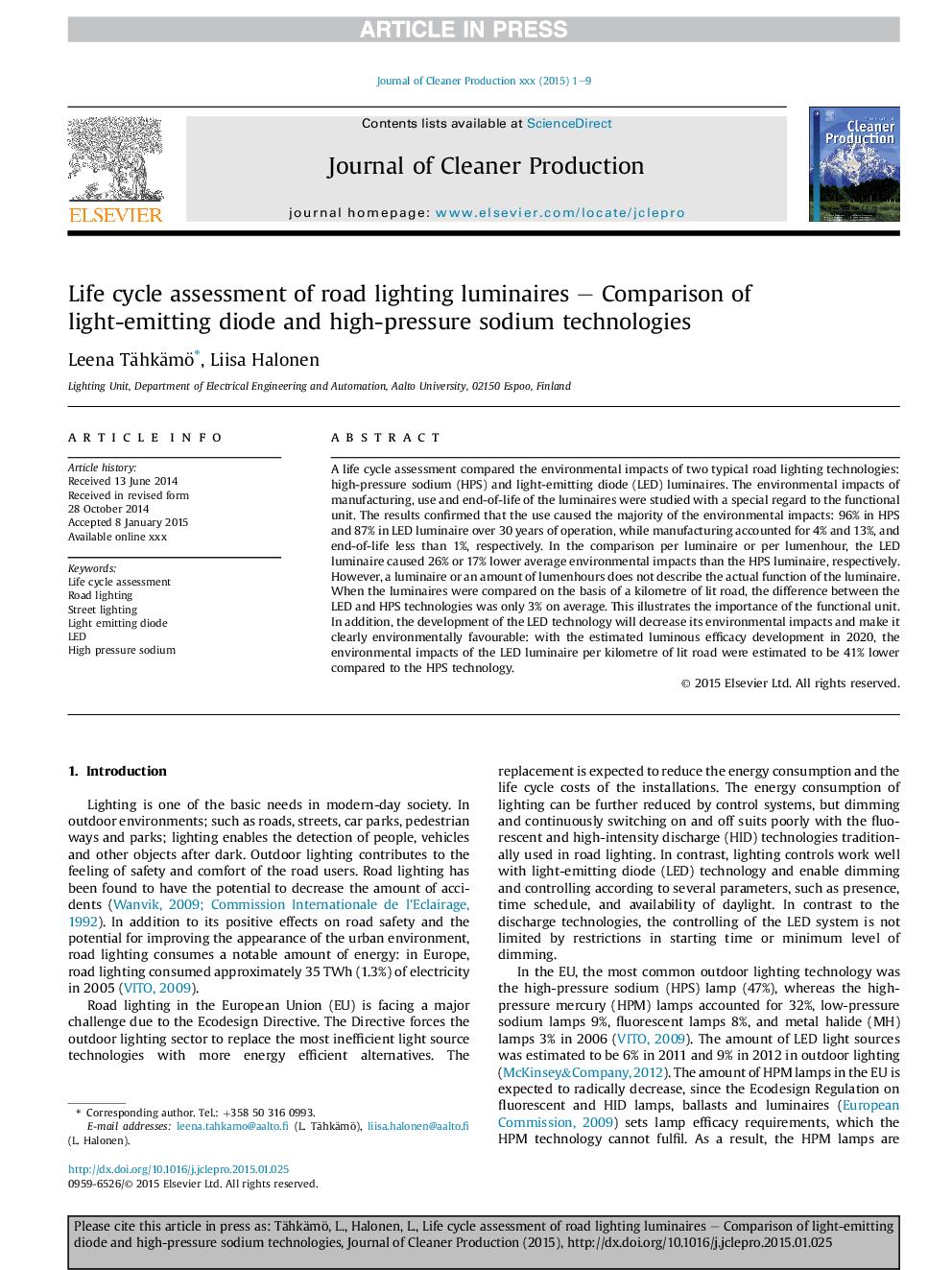| Article ID | Journal | Published Year | Pages | File Type |
|---|---|---|---|---|
| 8104806 | Journal of Cleaner Production | 2015 | 9 Pages |
Abstract
A life cycle assessment compared the environmental impacts of two typical road lighting technologies: high-pressure sodium (HPS) and light-emitting diode (LED) luminaires. The environmental impacts of manufacturing, use and end-of-life of the luminaires were studied with a special regard to the functional unit. The results confirmed that the use caused the majority of the environmental impacts: 96% in HPS and 87% in LED luminaire over 30 years of operation, while manufacturing accounted for 4% and 13%, and end-of-life less than 1%, respectively. In the comparison per luminaire or per lumenhour, the LED luminaire caused 26% or 17% lower average environmental impacts than the HPS luminaire, respectively. However, a luminaire or an amount of lumenhours does not describe the actual function of the luminaire. When the luminaires were compared on the basis of a kilometre of lit road, the difference between the LED and HPS technologies was only 3% on average. This illustrates the importance of the functional unit. In addition, the development of the LED technology will decrease its environmental impacts and make it clearly environmentally favourable: with the estimated luminous efficacy development in 2020, the environmental impacts of the LED luminaire per kilometre of lit road were estimated to be 41% lower compared to the HPS technology.
Related Topics
Physical Sciences and Engineering
Energy
Renewable Energy, Sustainability and the Environment
Authors
Leena Tähkämö, Liisa Halonen,
